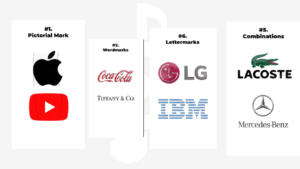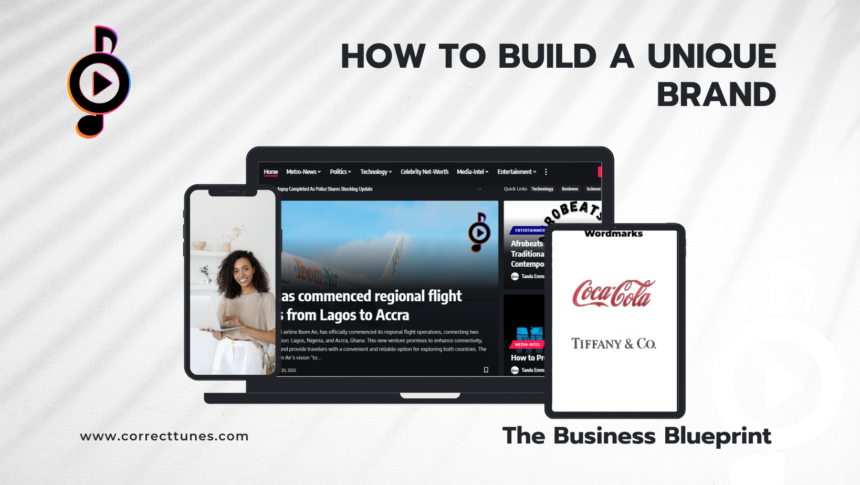Knowing that your customers have countless options, branding is your way of saying, “Hey, we’re here, and this is what we’re all about!” It is your business’s signature that sticks in people’s minds and hearts.
Think of it as the heart and soul of your business, the thing that tells people why they should choose you over everyone else. It’s your chance to build a lasting connection with your audience and influencing their choices.
What Is Branding?
Branding, in simple terms, is like giving your business a personality, a face, and a unique story. It’s not just about having a cool logo or a catchy slogan (though those are part of it); it’s about creating a strong and memorable identity for your business. It’s the art of showing the world who you are, what you believe in, and what makes you different from all the other options out there.
Branding seeks to achieve one fundamental goal: making a business more appealing to a specific group of people than its competitors.
- Advertisement -
READ ALSO: Starlink Partners with Jumia to Expand Internet Service in Africa
It aims to influence the decision-making process of your audience, guiding them to consistently choose your business over others. The simplicity beneath the complexity: While the visual aspects, like logos and aesthetics, play a role, they only represent the tip of the branding iceberg. It’s not just about having an eye catching logo on your website (though that’s part of it); it is more about shaping a unique identity for your business to make it stand out in a crowded marketplace.
The Importance of Branding
Why branding is a big deal for your business?. Imagine for a moment that you’re running a business, and you want people to buy your products. Now, here’s the deal: if all you know about branding is that it involves having a fancy logo and a slick website, well, you’re missing the bus. You must understand that there are tons of companies vying for your customers’ attention. And guess what? They’re not just relying on flashy visuals; they’re diving deep into understanding their audience. They want to know what makes their customers stick, what keeps them up at night, what gets them excited, and what problems they need solving. Armed with this knowledge, they craft a plan to communicate with their customers in a way that stirs up feelings and thoughts about their brand, ultimately influencing the decision to buy.
Brand Strategy vs. Brand Identity

A Brand Identity:
Brand identity primarily deals with the visual representation of a brand.– it includes elements like, your logo, colors, fonts, and all the things that make your brand look pretty. It’s what people see and remember when they visit your website or spot your products on a shelf. You can think of it as the first impression you make.
Your brand’s visual identity is what your audience sees first. It serves as the initial point of contact, attracting or repelling potential customers based on the aesthetics and design.
B Brand Strategy:
On the flip side, brand strategy is the brain behind beauty. It’s the game plan that guides how your brand interacts with the world. It’s about understanding your audience, your competitors, and your unique spot in the market. It’s the art of setting yourself apart and crafting a message that resonates with your target crowd. It dictates how you communicate with your audience, whether you adopt a cheeky, fun, formal, or authoritative tone – all with the aim of drawing them in and standing out from your competitors.
So, in simple terms, brand identity is the good looks, and brand strategy is the smart moves. They work hand in hand. Your identity catches people’s eye, but your strategy wins their hearts and minds. Creating a brand is not just about looking good; it’s about having a plan that makes your brand unforgettable.
The Brand-Building Process
Now that we’ve covered the essentials of branding, let’s look out for helpful tips to help you build a powerful brand. Think of this as your blueprint.
Brand DNA
At the heart of a brand is its DNA, consisting of several critical elements. These include the brand’s purpose, vision, mission, and values. It outlines the brand’s ultimate purpose, where it envisions itself in the future, the mission it is committed to, and the values it upholds. Every successful business out there starts with a strong foundation. (brand’s DNA) this entails your purpose, vision, mission, and values. This sets the tone for your brand’s identity and gives you a clear direction.
Target Audience
A common mistake in business is overlooking the significance of defining a specific target audience. Instead of trying to appeal to the entire market, successful brands segment their audience into distinct groups, allowing for more tailored and relevant connections. It is more about having control over a particular niche, You need to know your audience inside out. You can’t be everything to everyone.
Positioning Strategy
In a market filled with competitors, Your positioning strategy is about finding your unique spot in the market. It’s essential to identify gaps and opportunities. What is your competition offering your audience, and where can you provide something different or better.
Brand Personality
Your brand personality reflects the traits and characteristics that make your brand unique. It involves Understanding your audience’s personality and values. These personality traits shape the way you connect with your audience. So, decide who you want to be in your customers’ eyes.
Verbal Identity/ Messaging
What You Say: It’s about defining what you want to convey to your audience – what’s essential to them in their decision-making process and what signals will indicate that you have what they need. Brand messaging is one of the most impactful tools in influencing your audience. It includes everything from your website copy to the overall communication strategy.
Brand Name and Tagline
When people see your brand name and tagline, it’s often their first exposure to your brand. They should quickly understand what your brand is about and how it can benefit them. It’s the word or phrase that people associate with your business. Think of it as your brand’s identity card.
Imagine this: You’re strolling down the aisle of a supermarket, surrounded by countless products and brands. What makes you stop at one particular product and pick it up? More often than not, it’s the brand name and tagline that catch your attention.
Your brand name should Leave a Lasting Impression: strive to choose words that will stick in people’s minds. They should be memorable and reflect your brand’s essence
Brand Marketing Strategy –
Building a brand isn’t enough; you need to let the world know about it. By Developing a marketing strategy that leverages your brand’s strengths and uniqueness. This includes advertising to strategically amplify your brand’s presence and impact in the market.
- Market Research: Understand the current trends, consumer behavior, and your competitors’ strategies. This knowledge will be the lens for your marketing plan.
- Channel Selection: Identify the platforms and channels where your target audience is most active. Whether it’s social media, email marketing, content marketing, or traditional advertising, choose the channels that will maximize your reach.
- Content Creation: Content is the fuel for your marketing strategy. Create high-quality, relevant, and engaging content that showcases your brand’s expertise and resonates with your audience. This includes blog posts, videos, infographics, and more.
- Consistency is Key: Maintain consistency in your branding across all marketing channels. From the tone of your social media posts to the design of your email newsletters, make sure everything aligns with your brand’s personality and message.
- Paid Advertising: Consider paid advertising campaigns to boost your brand’s visibility. Platforms like Google Ads and social media advertising can be highly effective when executed with a clear strategy.
- Influencer Partnerships: Collaborate with influencers and industry leaders who align with your brand values. Their endorsement can introduce your brand to a broader audience.
- Email Marketing: Build and nurture an email list of engaged subscribers. Email marketing allows you to maintain a direct line of communication with your audience, share updates, and promote your products or services.
- Community Engagement: Actively engage with your audience on social media and other community platforms. Respond to comments, answer questions, and create a sense of community around your brand.
- Budgeting: Allocate a budget for your marketing efforts. This budget should be based on your goals, the cost of advertising in your chosen channels, and the potential (ROI) return on investment.
Your marketing strategy should be tailored to your brand’s unique position, goals, and audience. It Is a continuous process of refinement, adaptation, and expansion as you build and strengthen your brand’s presence in the market.
Conclusion
Your brand is not static; it grows and evolves as you adapt to the changing needs and desires of your customers. It is a reflection of who you are, what you stand for, and the value you offer. With all this said and done, This is How To Build A Unique Brand.





